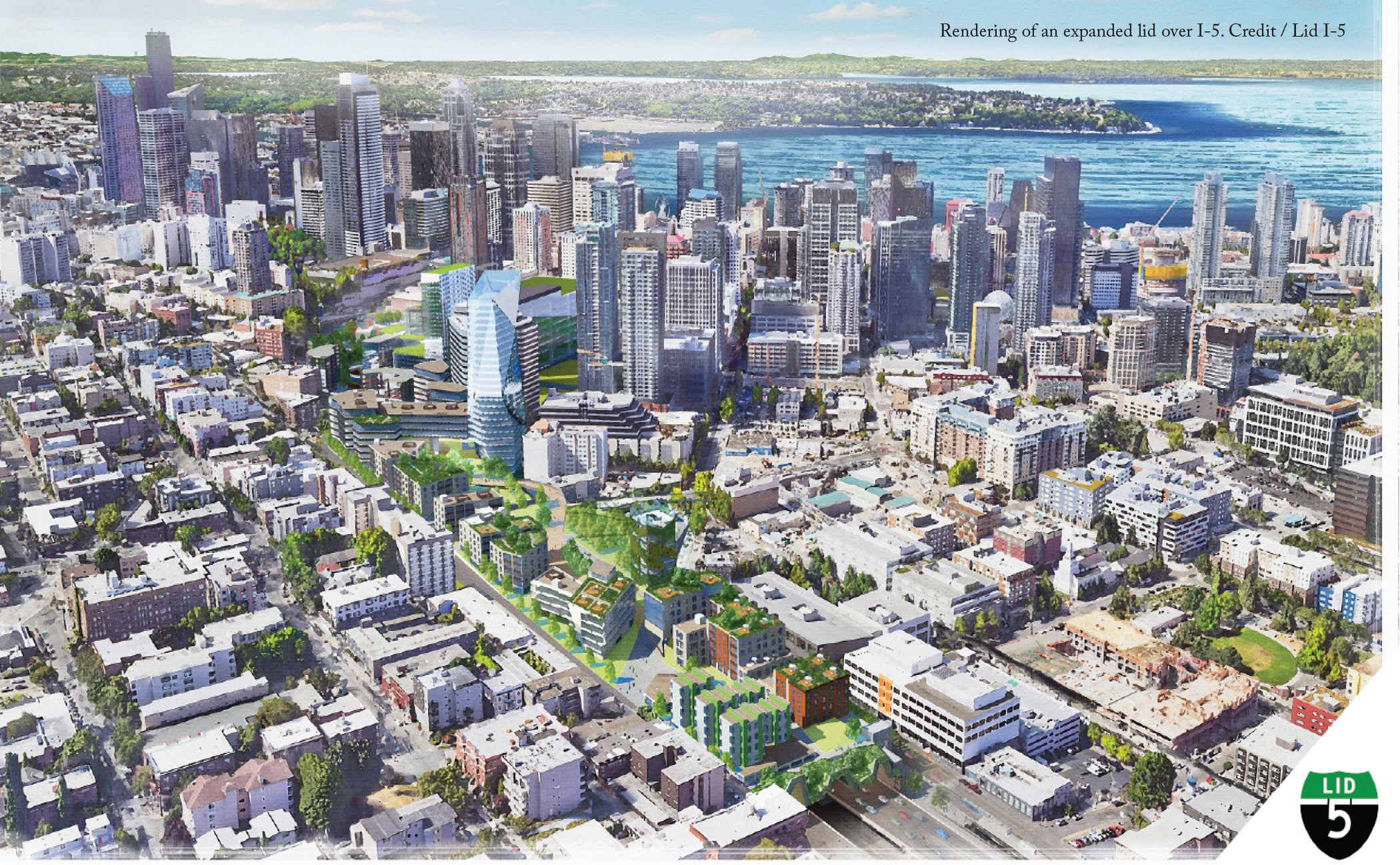History and Context
Early on, Seattle pioneered a new way of thinking about the relationship between city and freeway with the construction of Freeway Park over I-5 in downtown. Today, the highway is overdue for safety upgrades, including earthquake retrofitting, presenting the perfect opportunity to expand this lid and better serve people, not just cars. The Lid I-5 movement seeks to build on Freeway Park’s legacy and spark a citywide conversation about what can be done with highways that damage communities.
When discussions first began around the construction of I-5, some Seattle residents recognized that the highway would have consequences: notably increased pollution and significantly less street connectivity across the highway. The First Hill Improvement Club was vocal that the highway builders needed to mitigate the road’s effects with lids and other measures. Georgetown residents also sought to preserve the Georgetown Playfield in full. Both of these requests went unanswered. Only in 1976, nine years after the highway was completed, did the City of Seattle step in and support the creation of Freeway Park, a 4.9-acre green space over the highway that at least partially restored lost connections to First Hill. The park became one of the earliest examples in the country of a freeway lid.
Since then, Freeway Park has been expanded several times to encompass a total of 5.2 acres. And it isn’t the only effort that Seattle has undertaken to remove or mitigate the effects of intrusive highways. Interstate 90 in the Mount Baker neighborhood is partially covered by a 10.3-acre lid that supports a regional trail and Sam Smith Park. In 2019 the city removed the Alaskan Way Viaduct that covered its waterfront, opening up this unique natural resource for the enjoyment of its residents.
Proposal
Since 2015, the advocacy group Lid I-5 has sought to expand on these successes and has worked with the public on new design concepts that could add another 17 acres of lid area over I-5. The group recognizes that an expanded I-5 lid can simultaneously address several of the pressing challenges Seattle faces. Downtown Seattle lacks sufficient green space, and the expansion of the lid could create more for the 40,000 people who would live only a 15-minute walk or less away. The same residents who lack easy access to green space are also concerned about displacement risks, which have increased in downtown since 2010. An expanded lid over I-5 could provide new land on which to build affordable housing in the heart of a diverse neighborhood with both a high displacement risk and high access to opportunity.

Rather than endorsing one particular concept for what gets built on top of the freeway, Lid I-5 remains purposefully flexible so that the greater community can weigh in on plans that can be calibrated to suit local needs. That opportunity is expected to be coming soon. The City of Seattle has taken an interest and recently completed a feasibility study for the project, which demonstrated that lidding more of I-5 is both technically feasible and potentially desirable, as it can significantly improve the quality of life for residents.
Lidding I-5 has the potential to transform downtown Seattle with a win-win opportunity to address equity issues, boost resilience, add green space, and improve public and environmental health. In addition, it can spark important conversations related to other highways across Seattle and how they impact the neighborhoods around them. As the city continues to explore options to cover I-5, it should also look to partner with less well-resourced neighborhoods that are bisected by freeways (like SR 99 in South Park) to develop remedies that lessen or eliminate their negative effects. This larger, coordinated effort could build on Seattle’s past accomplishments and ensure that all the city’s residents benefit from forward-thinking design.


















